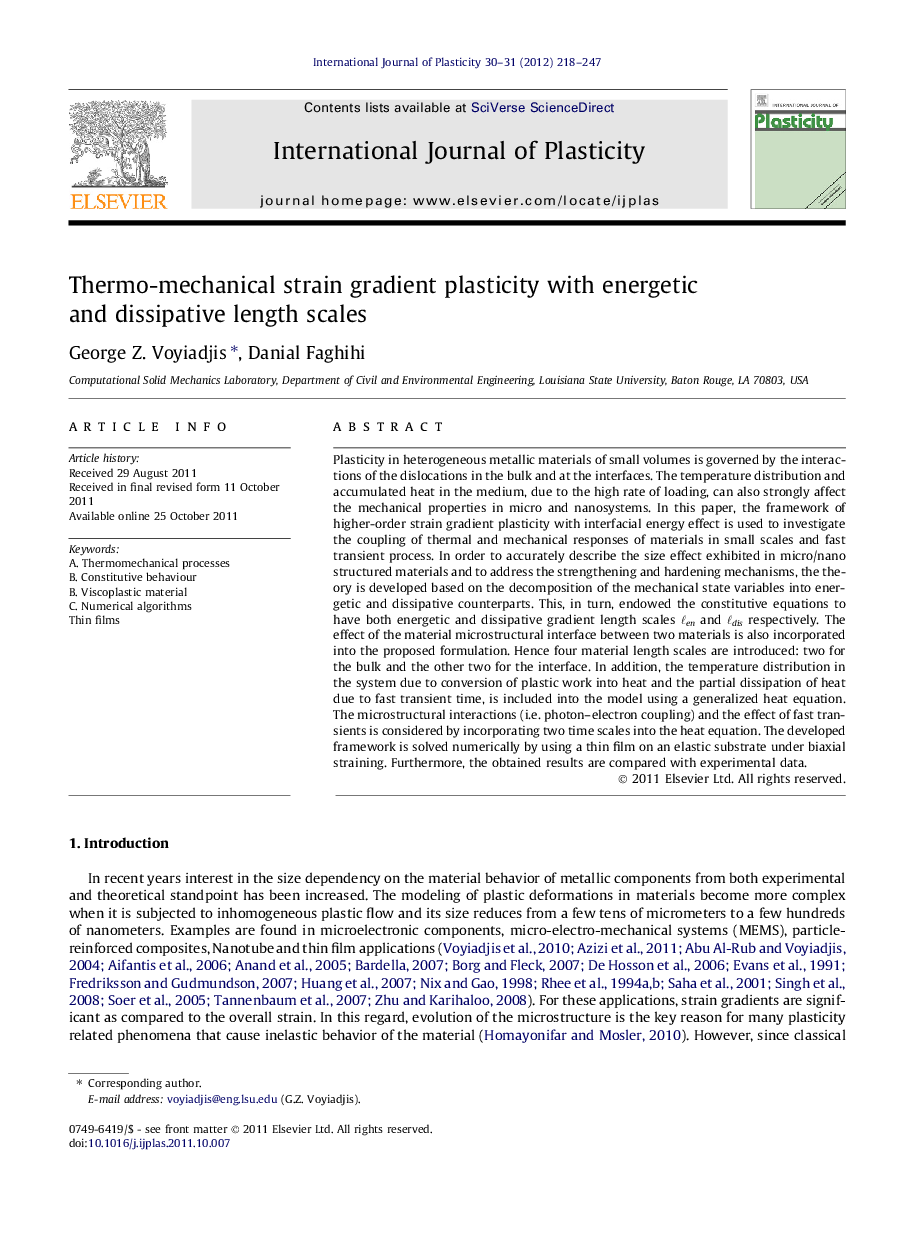| Article ID | Journal | Published Year | Pages | File Type |
|---|---|---|---|---|
| 784447 | International Journal of Plasticity | 2012 | 30 Pages |
Plasticity in heterogeneous metallic materials of small volumes is governed by the interactions of the dislocations in the bulk and at the interfaces. The temperature distribution and accumulated heat in the medium, due to the high rate of loading, can also strongly affect the mechanical properties in micro and nanosystems. In this paper, the framework of higher-order strain gradient plasticity with interfacial energy effect is used to investigate the coupling of thermal and mechanical responses of materials in small scales and fast transient process. In order to accurately describe the size effect exhibited in micro/nano structured materials and to address the strengthening and hardening mechanisms, the theory is developed based on the decomposition of the mechanical state variables into energetic and dissipative counterparts. This, in turn, endowed the constitutive equations to have both energetic and dissipative gradient length scales ℓen and ℓdis respectively. The effect of the material microstructural interface between two materials is also incorporated into the proposed formulation. Hence four material length scales are introduced: two for the bulk and the other two for the interface. In addition, the temperature distribution in the system due to conversion of plastic work into heat and the partial dissipation of heat due to fast transient time, is included into the model using a generalized heat equation. The microstructural interactions (i.e. photon–electron coupling) and the effect of fast transients is considered by incorporating two time scales into the heat equation. The developed framework is solved numerically by using a thin film on an elastic substrate under biaxial straining. Furthermore, the obtained results are compared with experimental data.
► Strain gradient plasticity is proposed for small-scale metallic volumes in fast transient times. ► The mechanical state variables are decomposed into energetic and dissipative components. ► Parameters for energetic and dissipative length scales for bulk and interface are introduced. ► The generalized heat equation is also incorporated into the formulation including two time scales. ► The simplified formulation is used to solve a thin film problem on a substrate.
